Select Language
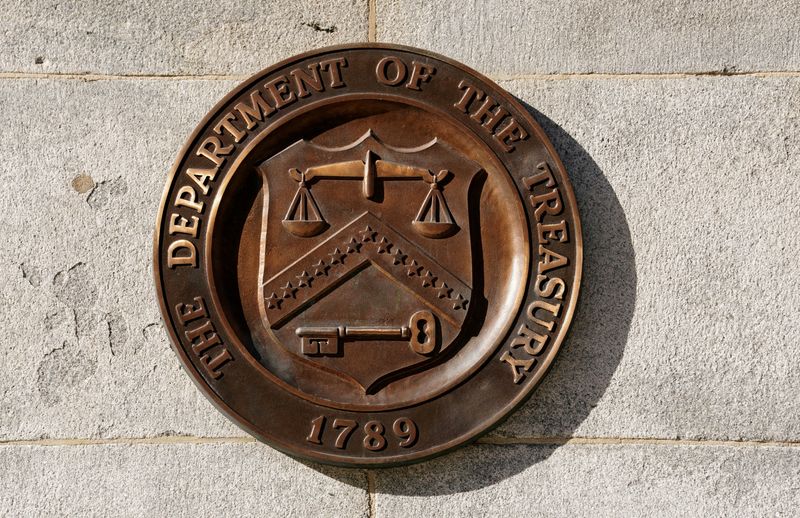
By Gertrude Chavez-Dreyfuss
NEW YORK (Reuters) - The U.S. Treasury on Monday said it expects to borrow $760 billion in the first quarter, $55 billion below the October estimate primarily due to forecasts for increased net fiscal flows and higher cash balance.
The first-quarter financing estimate assumes a cash balance of $750 billion at the end of March, the Treasury said in a statement.
The benchmark U.S. 10-year Treasury yield dropped to a more than a one-week low of 4.059% after the announcement. It was last down 9.2 basis points (bps) at 4.068%.
"The market moved on this information which just shows you how sensitive it is to refinancing estimates," said Gennadiy Goldberg, head of U.S. rates strategy at TD Securities in New York.
"But historically these estimates don't mean very much except for potentially, marginally less bill supply in the short term."
The Treasury also announced it expects to borrow $202 billion in the second quarter, as it projects a cash balance of $750 billion at the end of June.
It also said in the fourth quarter of 2023, the Treasury borrowed $776 billion in net marketable debt, in line with estimates released in October. It ended the fourth quarter with a cash balance of $769 billion.
The Treasury explained that the end-December cash balance was $19 billion higher than the October forecast due to other sources of financing such as the lower-than-estimated discount on marketable borrowing.
"The Treasury has already built sufficient cash balance," TD's Goldberg said.
"Now it's a question of: to what extent the Treasury will be or will not be increasing auction sizes. I think the market is thinking, reading this report, that the Treasury can slow down the pace of auction size increases but I don't know if that's the right takeaway at this point."
The Treasury will announce its refunding news, which will outline the upcoming auction sizes for bill, notes and bonds, on Wednesday at 8:30 a.m. ET (1330 GMT). It will likely announce a final quarter of nominal coupon auction size increases as the government's financing needs remain high.
TD projects funding requirements to rise gradually to $1.85 trillion this year and $1.9 trillion next year, as it anticipates fiscal deficits increasing in the coming years.
Thomas Simons, U.S. economist at Jefferies, wrote in a research note that he expects Treasury to announce a $121-billion package, higher than previous auctions. He anticipates $54 billion in three-year notes, $42 billion in 10-year debt and $25 billion in 30-year bonds. The auctions, he said, will take place on Tuesday, Wednesday and Thursday next week.

PARIS (Reuters) - French President Emmanuel Macron has told the European Commission that it was impossible to conclude trade deal negotiations with South America's Mercosur bloc and understands the EU has put an end to the talks, his office said on Monday.
Farmers have staged massive protests in France over the past few weeks, angry about rising costs and cheap imports, following similar action in other European countries, including Germany and Poland. French farmers have in particular objected to ongoing talks on a trade deal between the EU and Mercosur nations, which they say would allow cheap food imports that do not meet strict EU standards.
"(Macron) has very firmly reiterated to the Commission the fact it was impossible to conclude talks in these conditions," a French presidential adviser told reporters ahead of Thursday's EU summit.
The adviser added that the EU understood it was impossible to reach a deal in this context and that EU talks with Mercosur countries had been stopped.
"It is our understanding it has instructed its negotiators to put an end to the negotiation session underway in Brazil and in particular cancel the visit of the Commission's vice-president that had been envisaged in view of a conclusion," he added.
The Commission said that EU and Mercosur technical experts remained in contact, including meetings on Jan. 25-26 in Brazil, but some important questions remained open.
"The EU focus remains on ensuring that the agreement delivers on the EU’s sustainability goals, while respecting the EU’s sensitivities in the agricultural sector," a spokesperson said.
France has repeatedly expressed reservations about the EU-Mercosur deal, the text of which was agreed in 2019 after 20 years of on-off negotiations. Several other EU members back the deal. Talks resumed after the EU sought assurances on climate change and deforestation from Mercosur countries, a customs union formed by Brazil, Argentina, Uruguay and Paraguay.
In Brasilia, diplomats said Macron was under pressure to defend French agricultural issues and his views did not represent those of the European Commission, with talks expected to continue in the coming months.
Brazil's foreign ministry declined to comment on Macron's statements, but a ministry source said that the talks "are not carried out with individual countries or presidents, but between Mercosur and the European Commission."
EU and Mercosur trade negotiators met in Brasilia for two days last week but reported "limited progress," according to one diplomat involved in the talks, who was sceptical that the deal could be concluded before the World Trade Organization (WTO) ministerial meetings at the end of next month as some had hoped.
"Negotiations are proceeding slowly in the right direction. But it will take more time," another diplomat told Reuters.

By David Shepardson
WASHINGTON (Reuters) -Amazon and robot vacuum maker iRobot (NASDAQ:IRBT) said Monday they would end their plans to merge in the face of opposition from EU and U.S. antitrust regulators.
iRobot announced a significant restructuring plan to reduce costs and said it would cut about 31% of its workforce, or 350 jobs. The company also said founder Colin Angle has stepped down as its CEO of the Roomba robot vacuum manufacturer.
Angle said given the current challenges, he and the board "mutually decided that iRobot will be better served by a new leader with turnaround experience."
Amazon (NASDAQ:AMZN) said its proposed $1.4 billion acquisition of iRobot had no path to regulatory approval in the European Union.
EU antitrust chief Margrethe Vestager said Monday its in-depth investigation preliminarily showed "the acquisition of iRobot would have enabled Amazon to foreclose iRobot's rivals by restricting or degrading access to Amazon stores."
Reuters reported earlier this month the deal would be blocked by European Commission antitrust regulators and that its main concerns were that Amazon could thwart iRobot rivals on its online marketplace, especially in France, Germany, Italy, and Spain.
Amazon could have delisted rival robot vacuum cleaners, reduce visibility of rivals or raised costs of iRobot's rivals to advertise and sell their robot vacuum cleaners on Amazon's marketplace, Vestager added.
Separately, the Federal Trade Commission was poised to reject Amazon's deal before the companies announced they were abandoning it, a source told Reuters.
The FTC staff met with Amazon last week to inform them they planned to recommend the commission vote to sue to block the acquisition, the source added, saying the commission was set to hold a final meeting on Monday with Amazon before the commission could have voted to approve a legal challenge to the merger.
Amazon announced the deal in August 2022. The world's largest online retailer, which already owns Alexa and Ring, was pushing to expand its stable of smart home devices as well as expanding the e-commerce giant's virtual healthcare.
"We're disappointed that Amazon's acquisition of iRobot could not proceed," said David Zapolsky, Amazon's general counsel. "We're believers in the future of consumer robotics in the home and have always been fans of iRobot's products," he added in a statement.
Bedford, Massachusetts-based iRobot said it expects to report full-year 2023 revenue of $891 million, a 25% reduction and a loss of between $265 and $285 million. Under the terms of the merger agreement, Amazon will pay iRobot a $94 million termination fee.
Amazon has had a mixed record with competition regulators in recent years, completing a deal for healthcare provider One Medical and MGM's movie library.
But it faces a lengthy court battle in a Seattle federal court with the FTC over accusations the company uses illegal strategies to boost profits at its online retail empire, including an algorithm that allegedly pushed up prices by more than $1 billion.
iRobot shares fell 7.2% in afternoon trading Monday. Since first reports the deal might be blocked by EU regulators two weeks ago, iRobot shares have fallen by half. Amazon shares rose nearly 1%.
Critics opposed the deal, saying it would strengthen Amazon's already powerful position in smart home devices.
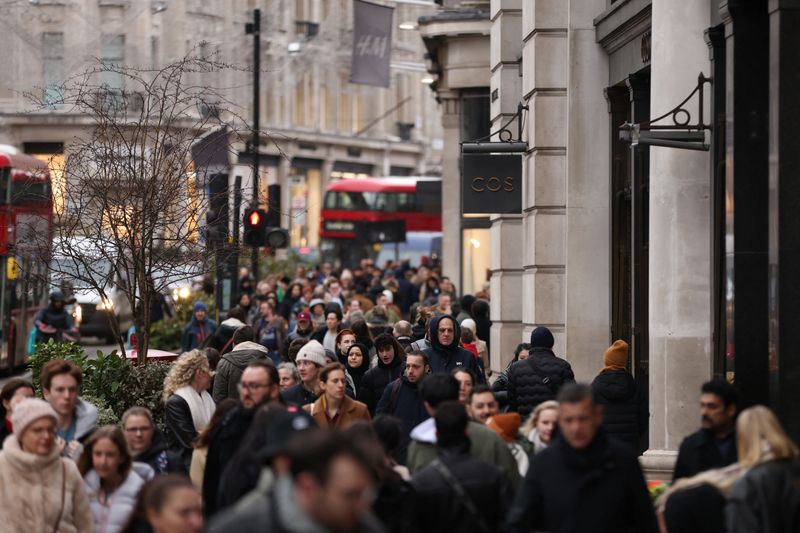
LONDON (Reuters) - Prices in British shops rose at the slowest annual pace since May 2022 this month, the British Retail Consortium (BRC) said on Tuesday, adding to signs of easing inflation pressures ahead of this week's Bank of England (BoE) policy decision.
The BRC said shop price inflation dropped to 2.9% in January from 4.3% in December, driven by heavier discounting of goods in January sales this year than in 2023.
Non-food prices were up 1.3%, the least since February 2022, while food prices rose 6.1% on the year - the smallest increase since June 2022 - as lower prices for tea and milk were partly offset by higher alcohol duties.
Mike Watkins, head of retailer and business insight at NielsenIQ, which provides data for the BRC, said lower wholesale costs were allowing supermarkets to cut the price of some goods.
"However, consumer demand remains fragile as most households are yet to feel better off after nearly 2 years of inflation," he said.
Britain's headline rate of consumer price inflation, which covers a wider range of goods and services than the BRC data, rose to 4.0% in December from 3.9% in November, its lowest since September 2021.
Even so, inflation has fallen faster than the BoE forecast at the start of November - largely due to a big drop in energy costs. Many economists expect the central bank to lower its near-term inflation forecasts when it announces its next interest rate decision on Thursday.
However, with inflation still double the BoE's target, the central bank is likely to indicate it remains some way from considering cutting interest rates from their current nearly 16-year high of 5.25%. Financial markets see a first quarter-point cut in May or June.
The BRC data was based on prices collected between Jan. 1 and Jan. 7.

PARIS (Reuters) -French farmers maintained nationwide protests on Saturday and kept their threat of roadblocks around Paris, arguing government measures to quell the demonstrations did not go far enough to meet their demands for better pay and living conditions.
On Friday, Prime Minister Gabriel Attal's government dropped plans to gradually reduce state subsidies on agricultural diesel, and announced other steps aimed at reducing the financial and administrative pressures faced by many farmers.
Yet the FNSEA, France's biggest farming union, said it would keep up its protests and many farmers remained at roadblocks set up by motorways and major roads on Saturday.
"On Monday, we will be heading for Paris," farmer Vincent Gimneste told BFM TV, at a roadblock in southern France.
Two local farmers trade unions representing those working in the countryside around Paris also told French media they were targeting causing major disruption in the capital on Monday, possibly around the Rungis food market.
Prime Minister Gabriel Attal will visit a farmers' site on Sunday, said Attal's office, as the government tries to prevent the protests from gaining in momentum.
Demonstrators also held a silent march in the northern French town of Beauvais on Saturday, to pay tribute to farmers who have died in recent years, with some having committed suicide due to the stress of their working conditions.
France is the European Union's biggest agricultural producer and the French farmers' protests follow similar action in other European countries such as Germany and Poland, with many demonstrators saying they are being hit by globalisation and foreign competition.

BANGKOK (Reuters) - Thailand's economy is in a state of recession owing to a high level of household debt, a deputy finance minister said on Monday, reiterating the need for stimulus to jumpstart the economy.
Deputy Finance Minister Julapun Amornvivat said the government was committed to delivering on its signature 500 billion baht ($14.05 billion) handout plan of transferring 10,000 baht to 50 million Thais, and hoped a delay in its rollout would not be long.
The government last week slashed 2024 growth projections for Southeast Asia's second-largest economy to 2.8% from an earlier forecast of 3.2% on weaker exports and lower foreign tourist numbers.
It also lowered the 2023 growth estimate to 1.8% from 2.7%. That compared to growth in 2022 of 2.6%.
"If you ask, now it's at the dangerous level. It's a kind of economic recession," Julapun told reporters.
"This is caused by a situation where the household debt burden is high. People's debt burden is high, private sector debt burden is high."
He added: "It's difficult to drive the economy forward. That's why we've seen economic growth that has always been sluggish."
Julapun also said Thailand is planning to issue bonds overseas in the next one or two years in dollar, yuan and yen.
He said there would be a sale of government savings bonds worth about 100 billion baht ($2.81 billion) in the 2024 fiscal year, with the first batch in march. ($1 = 35.59 baht)
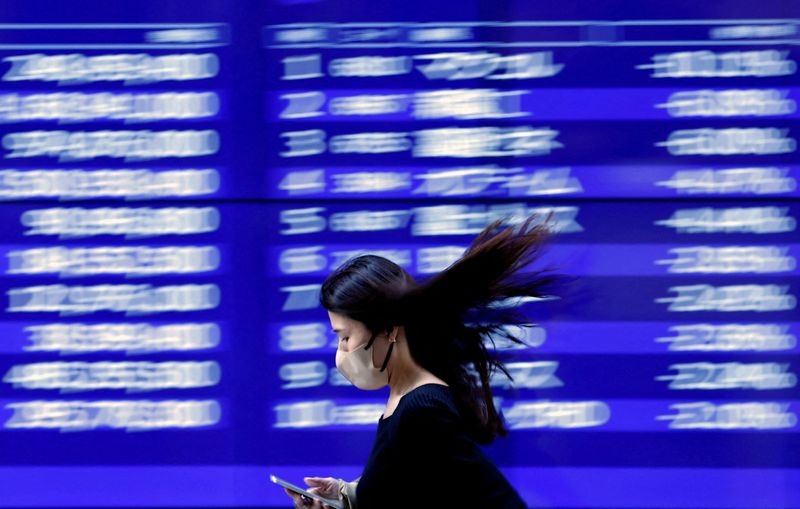
By Kevin Buckland
TOKYO (Reuters) - Chinese equities led a rally in Asian stocks to start the week, after regulators took new steps over the weekend to support the market.
Oil climbed after a step-up in Middle East violence, as a missile attack by Yemen's Houthi group caused a fire on a fuel tanker in the Red Sea, while three U.S. troops were killed after a drone attack in Jordan.
The dollar and U.S. Treasury yields hovered in the middle of recent ranges ahead of a highly anticipated Federal Reserve policy meeting later in the week.
Hong Kong's Hang Seng jumped 1.4%, and a sub-index of mainland property shares surged 3.6% after China's securities regulator said on Sunday that it will fully suspend the lending of restricted shares.
Regional stocks had already started the day on a firm footing, but extended gains after the Hong Kong open, with Japan's Nikkei gaining 0.8% and South Korea's Kospi advancing 1.2%, while Australia's stock benchmark added 0.4%.
Mainland China blue chips, however, were little changed after seesawing in early trade.
U.S. stock futures pointed 0.1% lower after the S&P 500 slipped 0.07% on Friday to snap a five-day streak of setting fresh all-time closing highs, although it marked a new intraday record during that session.
The backdrop for that was a continued moderation in consumer inflation in Friday's data, which added to the narrative for Fed rate cuts in coming months, but also suggested policy makers had little pressure to rush.
Markets expect the Fed to keep policy steady on Wednesday, but will be hunting for clues on when a first rate cut might come. Economists mostly predict June, but traders are pricing the risk of a March move at essentially a coin toss, according to CME Group's (NASDAQ:CME) FedWatch Tool.
The U.S. dollar index, which tracks the currency against six major peers, was content to stick to the middle of its range of the past two weeks at 103.52, little changed from Friday.
Long-term Treasury yields declined about 3 basis points to 4.1316%, putting them near the centre of their range since Jan. 18.
Last week's U.S. data continued the "remarkable run" of not-too-hot and not-too-cold economic indicators, pointing to a soft landing and a May start to policy easing, Commonwealth Bank of Australia (OTC:CMWAY) strategists wrote in a client note.
Odds for a March move should continue to be priced out this week, leading the dollar index to test 104 and bond yields to rise "modestly," they said.
The dollar was little changed at 148.06 yen on Monday, while the euro was flat at $1.08465 and sterling was steady at $1.27055.
In energy markets, Brent crude futures climbed 83 cents to $84.38 a barrel and U.S. West Texas Intermediate crude CLc1 rose 78 cents to $78.79 a barrel.
Gold added 0.23% to $2,023.39.
Cryptocurrency bitcoin ticked up to $42,165.
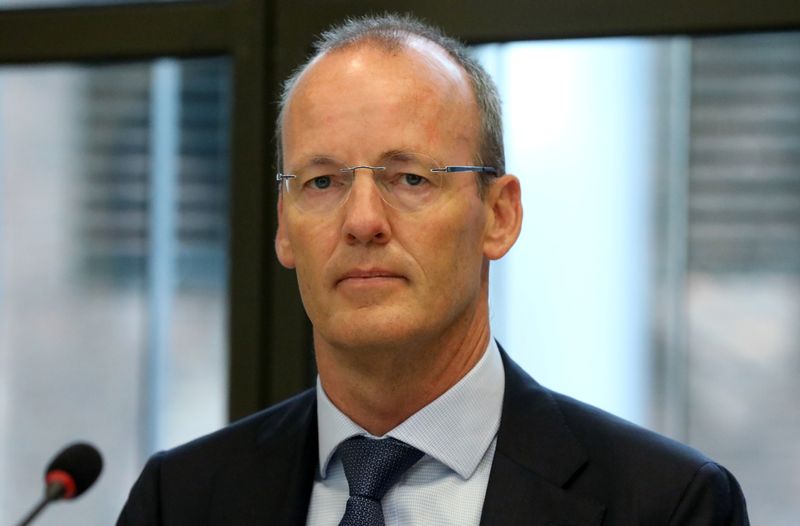
AMSTERDAM (Reuters) - The European Central Bank (ECB) will need to see proof of slowing wage growth in the euro zone before interest rates can be lowered, ECB governing council member Klaas Knot said on Sunday.
"We now have a credible prospect that inflation will return to 2% in 2025. The only piece that's missing is the conviction that wage growth will adapt to that lower inflation", the Dutch central bank governor said in an interview with Dutch TV program Buitenhof.
"As soon as that piece of the puzzle falls in place, we will be able to lower interest rates a bit."
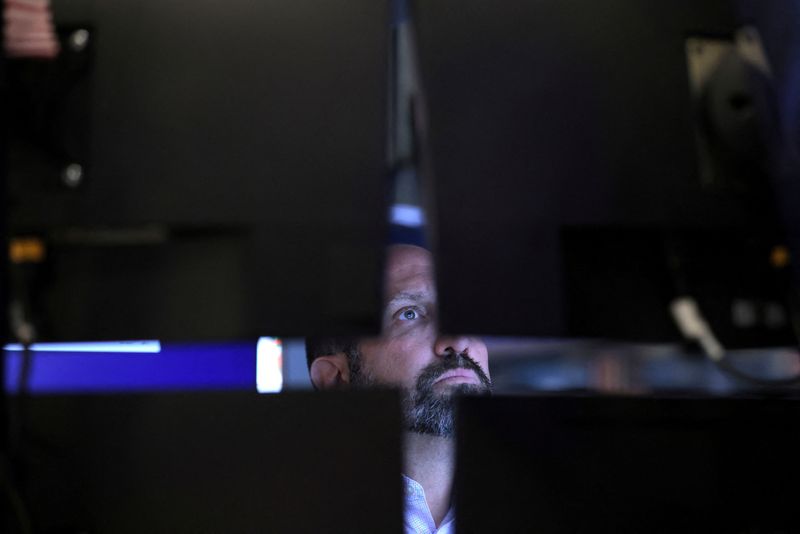
Investing.com -- It’s set to be an action-packed week in markets with the Federal Reserve’s first meeting of the year, a flurry of big tech earnings and the latest U.S. jobs report. The Bank of England also holds its first policy meeting of 2024 while data out of China is expected to remain gloomy. Here’s what you need to know to start your week.
Fed ahead
The Fed is widely expected to keep interest rates unchanged on Wednesday with investors eagerly awaiting any indication that officials believe they have progressed enough in their battle against inflation to begin cutting rates sooner rather than later.
Investors have pushed expectations for the Fed’s first rate cut to May from March following recent strong economic data and statements from Fed officials that suggested that cuts may not be as aggressive as expected.
Data on Friday indicated that inflation is moderating but consumer spending remains robust, leading to concerns that price pressures could begin to mount again.
Investors will be closely watching Fed Chair Jerome Powell’s post policy meeting press conference for any insights into how officials have been interpreting recent economic data.
Jobs report
Hard on the heels of the Fed decision the U.S. is to release the January jobs report on Friday, with the economy expected to have added 177,000 new jobs, slowing from 216,000 the prior month.
The recent stock market rally which has powered the S&P 500 to record highs has been driven by expectations of a U.S. economic “soft-landing” in which growth remains stable while inflation cools.
A weaker than expected reading could indicate that the 525 basis points of rate increases delivered by the Fed since 2022 are finally starting to bite, while stronger-than-expected hiring could bolster the case for the central bank to keep rates higher for longer.
The economic calendar also includes data on JOLTS job openings and consumer confidence on Tuesday, followed a day later by a report on private sector payrolls and weekly data on initial jobless claims on Thursday.
Megacap earnings
Earnings will be a major focal point in the week ahead with five of the massive “Magnificent Seven” growth and technology stocks that have powered markets higher for much of the last year reporting.
Alphabet (NASDAQ:GOOGL) and Microsoft (NASDAQ:MSFT) are due to report results on Tuesday, followed by Apple (NASDAQ:AAPL) and Amazon (NASDAQ:AMZN) on Thursday with Meta Platforms (NASDAQ:META) closing out the week on Friday.
With the S&P 500 officially in a bull market, the Magnificent Seven's results will be crucial in determining whether the index can maintain its momentum.
Collectively, the market capitalization of Alphabet, Microsoft, Apple, Amazon and Meta account for nearly 25% of the S&P 500, giving them an outsize influence on the performance of the broader index.
"There’s not this monolithic performance among those stocks anymore," said Liz Ann Sonders, chief investment strategist at Charles Schwab told Reuters. "If there is a downside to earnings … that could take the bloom off the rose" for the market as a whole.
Bank of England
The BoE is expected to keep interest rates on hold on Thursday and while it may drop its long-held warning that it will hike rates again if inflation rebounds it is expected to indicate that rates need to remain restrictive for an extended period.
The latest U.K. jobs report showed that wage growth rose at the slowest pace in almost a year in the three months to November, but inflation unexpectedly rose to 4% in December.
Britain's economy started 2024 on a stronger footing but data last week indicated that supply disruptions in the Red Sea are reigniting inflation in the manufacturing sector.
The BoE raised interest rates 14 times between December 2021 and August 2023, taking rates to a peak of 5.25% after inflation surged to a 41-year high of 11.1% in late 2022.
China PMIs
China is to release official purchasing managers' index (PMI) data on Wednesday that is likely to show that the world’s second largest economy remains on a shaky footing.
China's economy expanded by 5.2% in 2023, but its post-pandemic recovery has been shaky, with a protracted housing downturn, mounting deflationary risks and slowing global growth casting clouds over the outlook for this year.
China's central bank announced last Wednesday that it was making a 50-basis point cut to bank reserves, the biggest in two years, sending a strong signal of support for a fragile economy and the country's plunging stock markets.
Still, analysts say more stimulus is needed this year to get economic activity on more solid footing.
--Reuters contributed to this report

A look at the day ahead in European and global markets from Kevin Buckland
The feel-good factor that lifted stocks overnight fizzled on Friday, with neither gains on Wall Street - including another record for the S&P 500 - nor the afterglow of China's deep cuts in bank reserve requirements able to keep Asian stocks afloat.
Mainland and Hong Kong-listed shares started the day with a slight pop higher but quickly turned lower, while Japan's Nikkei erased the last of the gains for the week that had taken it to a 34-year peak on Tuesday.
Enthusiasm was drained by events on Wall Street after the close. Intel (NASDAQ:INTC)'s underwhelming revenue forecasts pushed its stock some 10% lower in extended trading, and Asian semiconductor shares toppled like dominoes.
The Nikkei's four worst-performing shares were all from the chip sector. The Hang Seng's high-tech subindex slipped 2.65%. That doesn't bode well for European tech shares.
But there are policy-driven undercurrents affecting Asian shares as well.
There's been a slow-burn repricing of Japanese risk after the Bank of Japan's hawkish tilt on Tuesday.
And in China, where policy measures have so far been sporadic and disappointing, it's been state-backed stock buying and restrictions on short-selling that are supporting markets, as much as any optimism over potential stimulus measures.
A handful of noteworthy earnings reports are due later in the day from Scandinavia, including Sweden's Volvo, but the European data calendar is light, consisting mainly of consumer sentiment readings from Germany and France.
The weekend invites some profit taking, particularly with the week ahead bringing financial results from the giants of U.S. tech - Apple (NASDAQ:AAPL), Microsoft (NASDAQ:MSFT), Amazon (NASDAQ:AMZN), Alphabet (NASDAQ:GOOGL) and Meta Platforms (NASDAQ:META) - not to mention a Federal Reserve meeting and the always influential monthly jobs report.
But the MSCI world index, up more than 1% for the week so far, still looks likely to manage a third straight weekly gain by the time of Wall Street's closing bell, despite Asia's disappointing start.
Key developments that could influence markets on Friday:
-Germany GfK Consumer Sentiment (Feb), France Consumer Confidence (Jan)
-Earnings from Volvo AB (OTC:VLVLY), Telia (ST:TELIA) Company AB, Sartorius AG
(By Kevin Buckland; Editing by Edmund Klamann)

